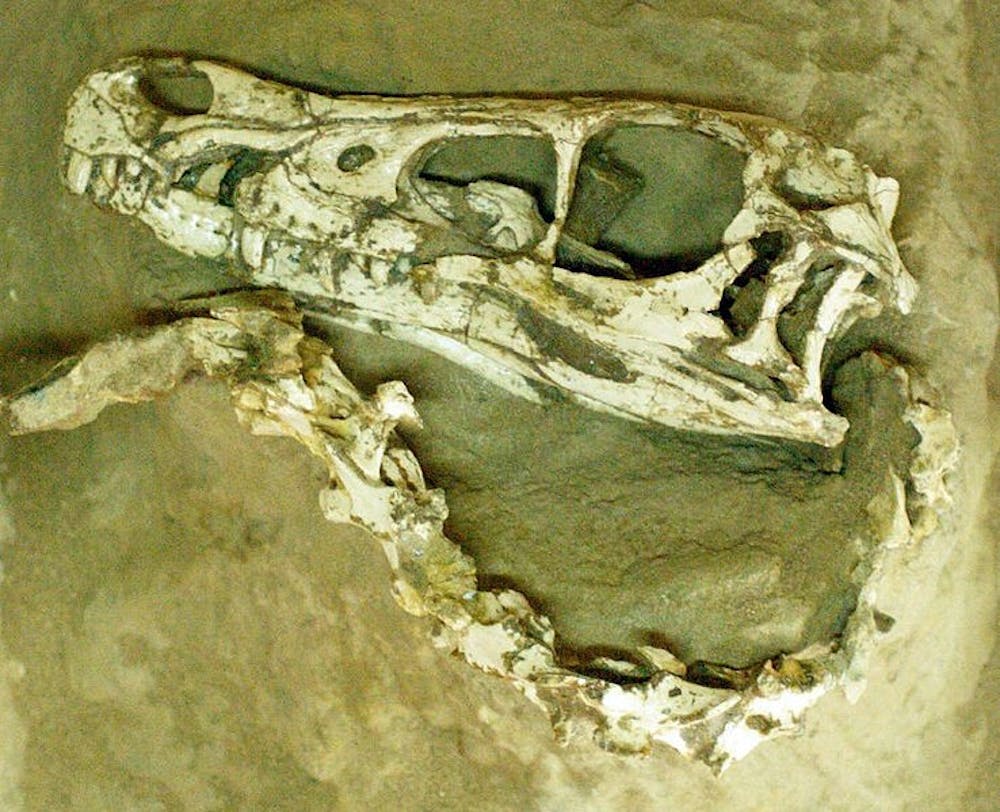A fossil hunter in East Sussex, England dug up a seemingly plain and ordinary brown pebble that has now officially been confirmed as fossilized brain tissue from a dinosaur in 2004. Although it took more than a decade for scientists to categorize the fossil, the tissue is the first fossilized dinosaur brain matter that has ever been discovered.
The fossil of dinosaur brain tissue was found by fossil hunter Jamie Hiscocks near Bexhill-on-Sea in Sussex. After careful research, scientists decided that the species is most likely related to Iguanodon, a large herbivorous dinosaur that lived during the Early Cretaceous Period about 133 million years ago.
The research on the brain tissue has been published in the Journal of the Geological Society of London, which paid tribute to Professor Martin Brasier from the University of Oxford, an active researcher who worked alongside David Norman from the University of Cambridge and ultimately coordinated the research into this particular fossil. Brasier passed away in a car accident in 2014, but that did not stop his colleagues from pursuing their mutual goals in fossil research.
The fossil itself exhibits various similarities to that of crocodiles and birds, which are species commonly believed to be associated with dinosaurs. Due to the soft texture of brain tissues, it is often an extremely difficult and meticulous task for scientists and archaeologists alike to find well-preserved fossils that are composed of tissues.
This explains why scientists have not made any significant progress in studying the historical evolution of tissue organs.
“The chances of preserving brain tissue are incredibly small, so the discovery of this specimen is astonishing,” co-author Alex Liu of Cambridge’s Department of Earth Sciences said in a press release.
Liu was one of Brasier’s Ph.D. students in Oxford at the time that studies of the fossil began, and he has stuck with this program throughout its duration.
Liu explained that this specific section of the brain tissue has been so well-preserved only because the dinosaur’s brain was immersed in a highly acidic and low-oxygen body of water shortly after its death. This allowed the frail compositions within the tissues to mineralize, and this is the main chemical driving force that slows down most of the decaying process.
Working with colleagues from the University of Western Australia, the researchers from the University of Oxford used a scanning electron microscope (SEM) to identify the meninges, three thin layers of membrane that envelope the brain. Scientists were also able to identify other structures of the dinosaur brain such as blood vessels, tiny capillaries and strands of collagen.
Typical reptiles have brains that are shaped like a sausage. However, the brain itself only occupies about half of the total cranial cavity space. The other half being consists of intricate connections of blood vessels and sinuses, vascular chambers with thin walls that drains excess fluids.
What came as a big shock for scientists is that the dinosaur brain they observed seemed to occupy a lot more of the cranial cavity space compared to the brains of modern reptiles. A plausible explanation for this phenomenon is that gravity caused the brain to press more tightly against the edges of the brain cavity.
“As we can’t see the lobes of the brain itself, we can’t say for sure how big this dinosaur’s brain was,” Norman said in a press release. “Of course, it’s entirely possible that dinosaurs had bigger brains than we give them credit for, but we can’t tell from this specimen alone. What’s truly remarkable is that conditions were just right in order to allow preservation of the brain tissue — hopefully this is the first of many such discoveries.”





